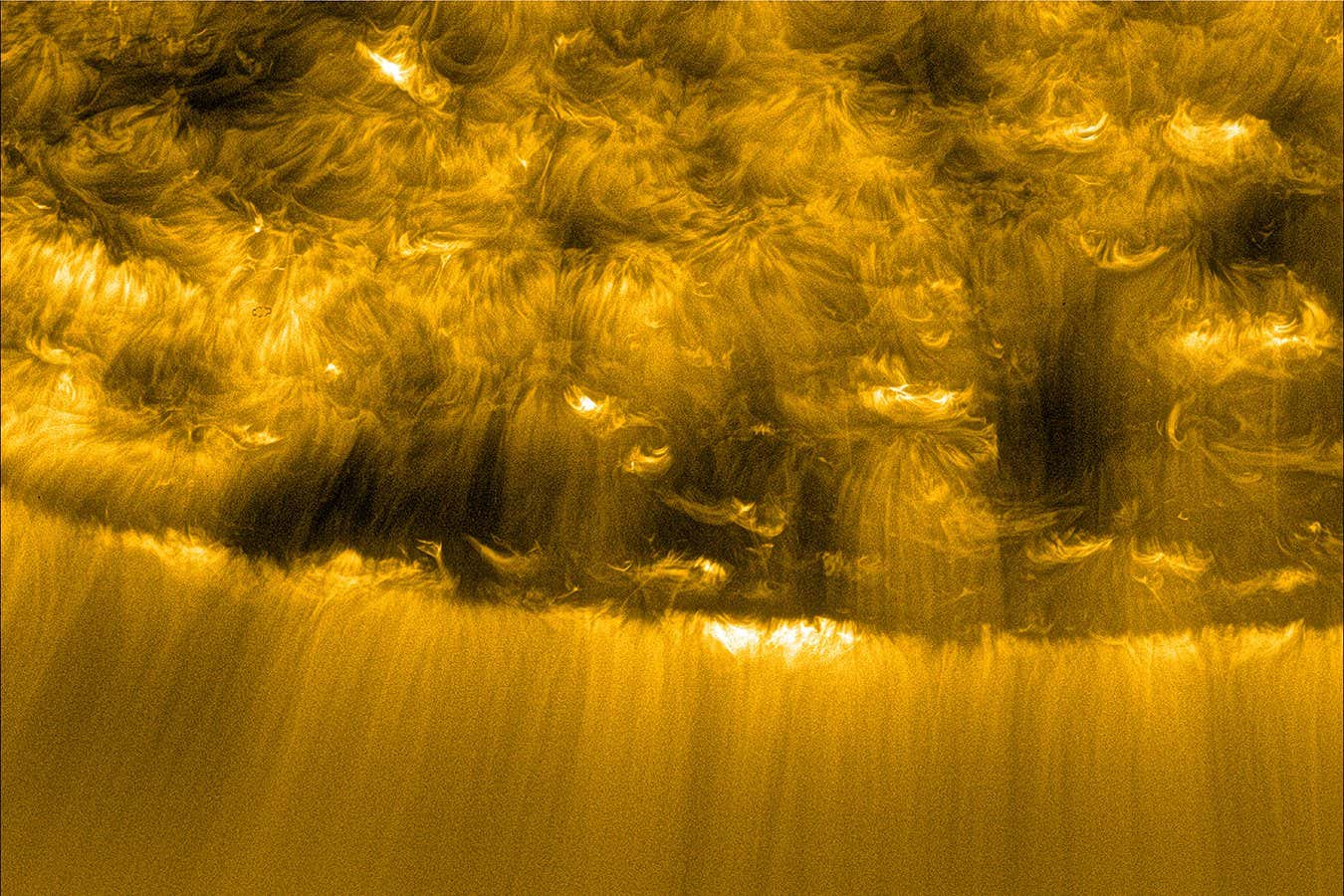The source of the charged plasma that makes up the solar wind has long been debated, but new evidence suggests it could come from a barrage of tiny flares
By Leah Crane
24 August 2023
Small-scale structures of solar wind emerging from a coronal hole on the sun
ESA & NASA/Solar Orbiter/EUI/Lakshmi Pradeep Chitta
The powerful solar wind may come from tiny jets of plasma. The solar wind is a barrage of charged particles, and how exactly those particles flow out from the sun has been under debate for decades – but with new high-resolution images, we might finally know.
The discovery was enabled by the Solar Orbiter spacecraft, which launched in 2020. Since then, it has captured some of the highest-resolution images of the sun we have ever been able to produce. Pradeep Chitta at the Max Planck Institute for Solar System Research in Germany and his colleagues examined these images to try to figure out how plasma can escape the sun.
They focused on dark splotches on the sun called coronal holes, which are regions where the sun’s magnetic field is open to space, allowing particles to escape. We knew that these holes had small plumes of plasma emerging from them, but the researchers spotted even smaller jets, called picoflare jets, that emit one-trillionth the amount of radiation of the most powerful solar flares.
Advertisement
Read more:
Astronomers have spotted inexplicably bright light coming from the sun
“There are these little outpourings of material, not only in the plumes but everywhere,” says Chitta. “The surprising part is that even in these dark, seemingly inactive portions of the coronal hole we see these jets, and they seem to be the ones that are most important.”
The jets ranged from about 200 to 500 kilometres across, each blasting material out of the sun at speeds in excess of 100 kilometres per second, with the strongest ones located in dark areas away from the bigger plumes. The magnetic properties of coronal holes meant that the plasma in these jets leaked away into interplanetary space.
